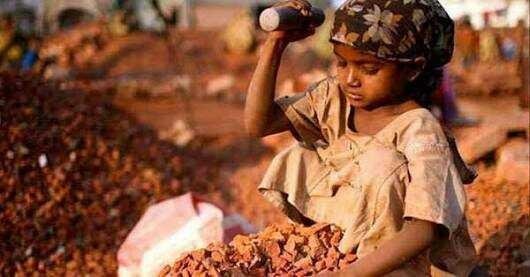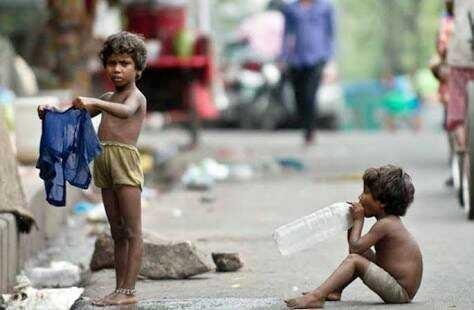In the country there are 10 million street children, not sleeping beds, 41 percent of people

The whole Rozina Begum has begun bagging in the capital's Magbazar area with two children. The eldest son is five and a half years old, the little boy has four legs. Father Mohammad Moslem, who had long ago left them and left. They are in the huts of polythene in the Parbag street pavement at Banglamotor. For the shopkeepers and pedestrians, mother Rozina Begum begs to beg the child, both of them started patting. Some of the pedestrians handed over money to the children of the Mayawi face. Looking at someone to eat, two children are looking for. Many people feed them a portion of the food. Unknowingly, child Qayyum and Umar are begging mother. Thus, like the two children, the future of the country's many street children has become a life of uncertain. Many of them are involved in various criminal activities. One such scenario will be celebrated on Friday, National Roadshow Day.
Lack of money, 75 percent of street children can not go to the doctor. There is no one to care for about 54 percent of them when they get sick. Approximately 40 percent of street children can not take bath daily. And 35 percent of children are in the open room. They grew up in unhealthy conditions.
According to the report, the number of roadships increased at alarming rates. The number of roadships currently in the country is 10 million. But there is no policy for growing children in the growing. To achieve the Vision 2021 declared by the government, there is now a need to create a complete policy for the welfare of these children. About 44 percent of street children smoke and 41 percent of children have no bed for sleeping at night. In no way 80 percent of street children work for different types of food. There is no winter clothing 84 percent. Due to not having a timely policy, the work of bringing the fragile population to the mainstream of the society has been hampered. Various initiatives taken by the government for the development of street children can not achieve the desired goals. Though these children are allocated in the national budget every year, these children are deprived of its benefits. If the government does not focus on the development of street children, implementation of Vision 2021 declared by the government will be difficult. Although initiatives taken to create an effective and complete policy for the development of street children during the past government, it is still not implemented today. It is also reported that 34 percent to 8 percent of the street children live in a particular place from 1 to 6 months. 29 percent of street children have been shifted due to law enforcement agencies, and 33 percent are due to guards. Although they spend the night under the open sky on the pavement, approximately 56 percent of the children are required to pay a monthly 150-200 rupees for night guard or mastana.
These paths are on the way on the way. Many of the street children living on the road are separated from their parents. Roadships working on the road who make a living on the street and return to the family at a particular time. And on the way, street children living in the house who live on the way home. They live in various slums, street sidewalks, railway stations, bus terminals etc. in the capital. They grew up in negligence, untidy, unhygienic and unhealthy conditions. They are deprived of their basic rights in life. Many people fall apart for a few days, even if they go to school. They have to engage with many types of work for the sake of life and livelihood. In addition to ferry, flowers, various ferries to the streets, the children are engaged in different fields including garment factories, buses and trucks. Most of these workplaces are risky for children and children's health. A large part of these street children are involved in various crime cycles. The future of a country depends on the future generation of that country. And there is a large part of our future generation street children. And without them, development can not be considered. Experts believe that not only the government, the administration, the organization, we all have some responsibility.
Efforts have been made to improve street life. Government-non-governmental organizations are coming forward for street students. According to the Ministry of Women and Children Affairs, the present government has taken steps to bring 40 thousand street children back to education program in exchange for money. Currently, eight thousand children are being paid two thousand rupees per month. They are participating in regular education programs. The ministry is also supervising their studies. All the disadvantaged children will be included in this program in phases.

Meanwhile, some organizations and human rights activists like Save the Children, Yusuf are working with a limited range of street children. Besides street children's education, as well as work opportunities. Sometimes the money is also helping. Apart from this, many NGOs are working to make the dream of the street children unaware of Bangladesh, Steps, Bird, Developed Bangladesh, TSTC, Swiss Bangladesh, Jago Foundation, Ekka, ASD. NGOs among these NGOs have roadshow accommodation for both day and night. But most of the street walkers do not know about these day care centers. The invincible Bangladesh is providing roadshow shelters by employing the physical, emotional and financial support of street children in various education and sports activities.&
WHAT HAPPENS FOR THOSE CHILDREN TODAY IN MY COUNTRY VENEZUELA ARE SEEN THAT ALSO, SOMETHING THAT NEVER SEEN BUT THE CRISES THAT ARE HAPPENING THERE HAVE BEEN TAKEN TO THE STREETS, GREETING FRIEND
Downvoting a post can decrease pending rewards and make it less visible. Common reasons:
Submit
Thank you for your entry.
Downvoting a post can decrease pending rewards and make it less visible. Common reasons:
Submit